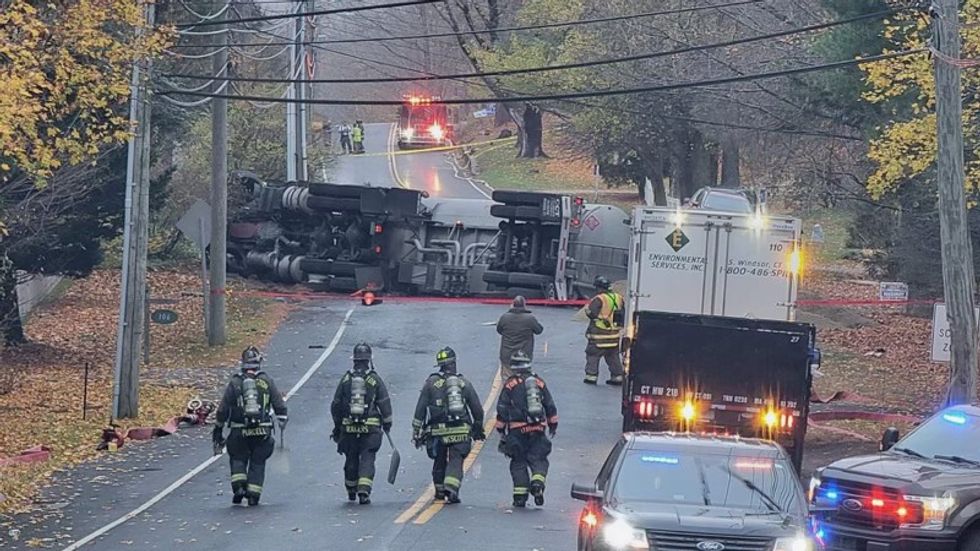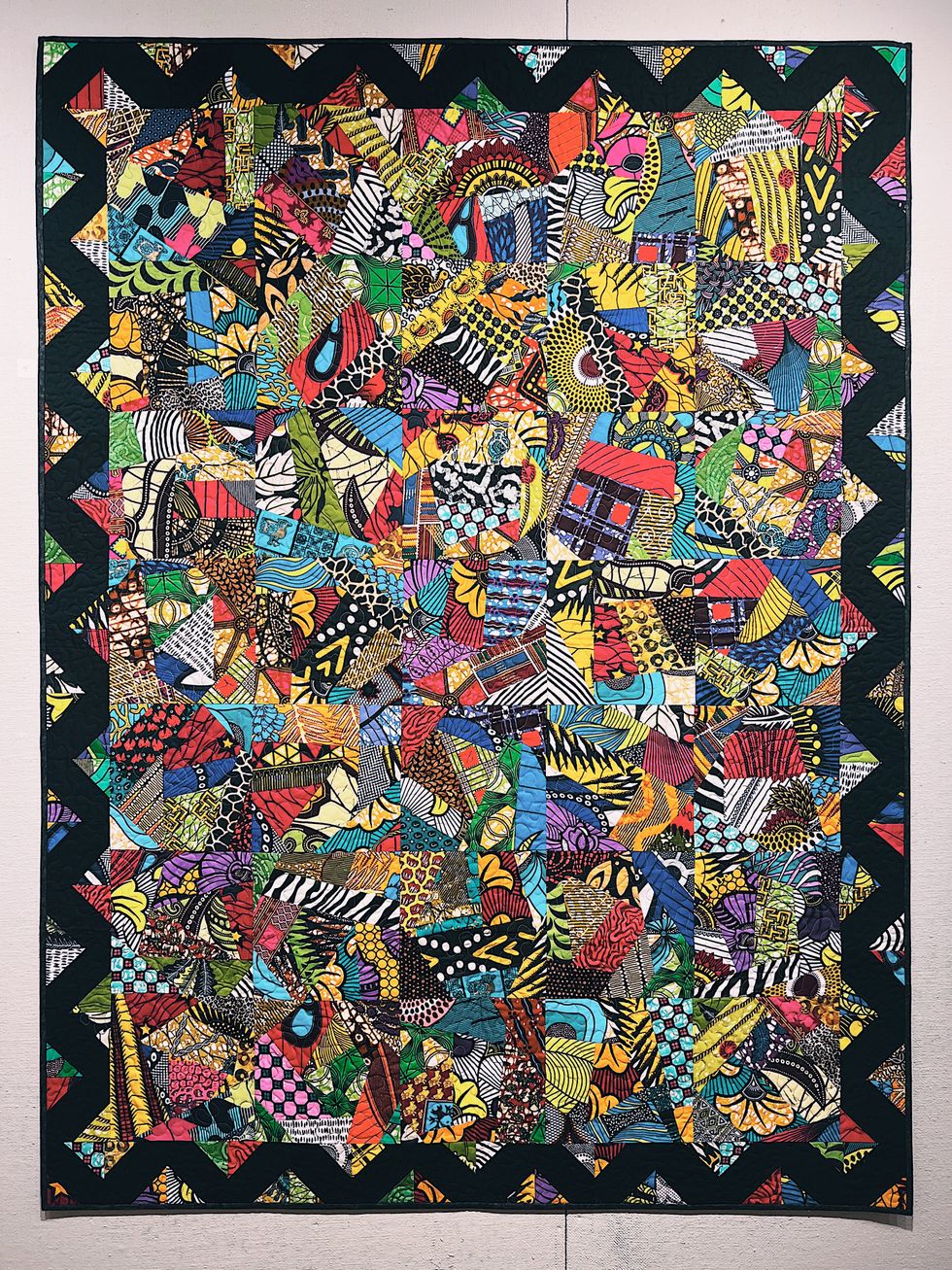NORFOLK — When a motorcycle collided with a vehicle on Route 44 in Norfolk on July 5, 2023, passersby called 911 and attended to the injured motorcyclist as he lay bleeding in the hot sun until first responders — the Norfolk Lions Club Ambulance, EMT’s, and a Norfolk firetruck — arrived.
Eight months earlier to the day, a nightmare scenario unfolded on the stretch of Route 44 that passes through the town center. Early on Saturday morning, Nov. 5, a gasoline tanker truck traveling west flipped on its side near Botelle Elementary School, spilling 8,200 gallons of gasoline and causing extensive environmental damage. First Selectman Matt Riiska said it will take years, and millions of dollars, to mitigate the effects of the tanker spill.
Norfolk residents for years have asked state officials to lower the speed limit on the section of state road that passes through Norfolk village, especially near the Town Green and elementary school. Their pleas have yet to be met.
Data on motor vehicle accidents in the Route 44 corridor extending from Winsted through Canaan provide evidence of a sustained rate of accidents. According to the UConn Connecticut Crash Data Repository, from January 2020 to April 2023, there were 278 crashes involving 502 vehicles and 657 people on the section of Route 44 that also serves as Main Street in Winsted, Norfolk, and Canaan. Of those, 215 of did not involve injuries, 35 had multiple injuries, and three involved fatalities.
After the tanker truck crash, 400 concerned citizens, spearheaded by residents Michael Selleck, Larry Hannafin and Sally Carr, signed and sent a petition to Gov. Ned Lamont and the Commissioner of the State Department of Transportation (DOT) on March 29, formally requesting that the Route 44 speed limit be lowered as it passes through Norfolk village — especially near the school and its playground close to the road.
“We propose that the speed limit, which is now 40 mph as it passes the school, be reduced to 25 mph from the intersection of Route 44 and Laurel Way continuing to the intersection of Route 44 and Blackberry Road,” the petition said.
Selleck, who lives alongside Route 44, has written numerous letters to the DOT requesting that the speed limit through town be set at 35 mph. He also requested “School Zone Ahead” signs to slow traffic as it descends a hill by the school.
DOT Commissioner Garrett T. Eucalitto, who grew up in Torrington and drove on Route 44 when he worked summers at Tobey Pond in Norfolk, responded to the petition May 5, promising a meeting with the petitioners. It has yet to be scheduled.
Commissioner Eucalitto, who suggested mitigation such as flashing lights near the school, also promised to send an investigative committee to Norfolk, which has not yet happened.
Meanwhile, Norfolk is investigating other options to address safety issues in a town that eliminated its Resident State Trooper Program in 2015, reducing enforcement capabilities.
A new state law that took effect Oct. 1 allows municipalities to purchase remote speed and red-light cameras that record license plates, driving speeds, and compliance with red lights. Speeding violations documented by the cameras would be treated like traffic tickets. Placement of the cameras would be left to local officials pending approval by the Office of State Traffic Administration (OSTA).
“The Town of Norfolk would like to work with the State of Connecticut to install the speed cameras on Route 44 in the area of Botelle School,” said Norfolk First Selectman Matt Riiska.
“We have tried numerous times to work with the Connecticut DOT to install signage to slow traffic with little effect,” Riiska explained.
“If cameras can be used to record speeders this is an option, we are open to trying,” he said.
Salisbury First Selectman Curtis Rand has also been trying for years to have the speed limit on Route 44/Main Street lowered. The Town of Salisbury requested reviews that were done in 2005, 2010, 2017, and 2021. Rand has received numerous letters of denial from the CTDOT in response to his letters. Recently, Rand has reached out to Norfolk resident Selleck and Norfolk Selectman Riiska to express his shared frustration.
“The problem is that Route 44 is designated an arterial road and as such is harder to regulate,” said Rand in a recent interview. He continued, “While I don’t have a problem with our local District 4 DOT, as the local traffic authority of Salisbury I would like to have a more respectful response from the CTDOT. I would like to meet and discuss the latest solutions for speed mitigation and safety such as roundabouts, median islands, speed cameras, and flashing beacons. I believe that if we join forces with other area towns that share our concerns, we stand a better chance of success. We all want our children to be safe.”
“It’s tragic and unacceptable that Connecticut’s pedestrian deaths are at a 40-year high. It’s not enough to ask drivers to slow down – we know the best way to prevent these tragedies is to start building safety features into our streets, like raised sidewalks or narrower traffic lanes,” said U.S. Sen. Chris Murphy (D-5th District).
“Last year was Connecticut’s deadliest year on the roads — with more than 300 driver, passenger, and pedestrian deaths,” added U.S. Rep. John Larson (D-1).










 A quilt by Litchfield-based artist Karen Griska.Alexander Wilburn
A quilt by Litchfield-based artist Karen Griska.Alexander Wilburn



